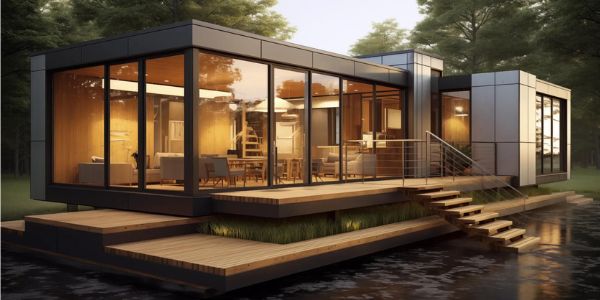We may earn money or products from the companies mentioned in this post.
5 Biggest Lies About Modular Homes
In the realm of home construction, modular homes have been gaining popularity as an efficient, cost-effective, and sustainable alternative to traditional site-built houses. However, despite their numerous benefits, misconceptions about modular homes persist.
In this article, we’ll debunk five common lies surrounding modular homes and shed light on the truth behind these innovative dwellings.
1. “They Lack Customization”
One prevailing myth about modular homes is that they offer limited customization options. Contrary to this belief, modular homes are highly customizable. Modern modular construction embraces a wide range of architectural styles and floor plans, allowing homeowners to personalize their spaces to suit their preferences.
From choosing the exterior finishes to determining the layout of interior spaces, modular homes offer a level of flexibility that rivals traditional construction methods.
Check Out The 7 Steps To Building A Modular Home (Explained)
In fact, many home manufacturers work with experienced architects and designers who collaborate with homeowners to create bespoke designs.
This means that you can have a home that reflects your unique taste and meets your specific needs, debunking the notion that factory built homes are generic or cookie-cutter in nature.
2. “Modular Construction is of Inferior Quality”
Another misconception surrounding modular homes is the belief that they are of lower quality compared to traditional stick-built homes. This couldn’t be further from the truth.
These homes are constructed with the same building materials and adhere to the same building codes and standards as traditional homes.
In fact, the controlled environment of a factory setting where some of these homes are built often leads to higher quality construction. The precision and consistency achieved in a factory setting minimize the risk of weather-related damage and other on-site variables that can impact the quality of traditional construction.
Additionally, these homes undergo rigorous inspections at various stages of the manufacturing process, ensuring that they meet or exceed industry standards.
3. “They Depreciate in Value”
A persistent falsehood about modulars are that they depreciate in value over time. However, just like traditional homes, the value of a modular home is influenced by factors such as location, market trends, and overall upkeep.
When well-maintained, a modular constructed home can appreciate in value just like any other property.
In fact, the efficiency of the modular construction process often results in cost savings, making these homes an attractive investment.
As the demand for sustainable and energy-efficient housing increases, the value of well-designed and well-maintained modular homes is likely to rise.
4. “Limited Longevity”
Some skeptics argue that modular homes have a shorter lifespan compared to traditionally built homes. The reality is quite the opposite. Prefabricated homes are designed and constructed to be durable and long-lasting.
The controlled manufacturing environment ensures that each component is assembled with precision and care, contributing to the overall structural integrity of the home.
Prefab Architecture: A Guide to Modular Design and Construction
Additionally, modular homes often come with warranties from the manufacturer! Thus, providing homeowners with peace of mind regarding the longevity and performance of their investment.
As with any home, proper maintenance and regular inspections can further extend the lifespan of a modular home. Thus debunking the myth that they are inherently short-lived.
5. “Modular Homes Are Prone to Weather Damage During Transport”
A common misconception is that these homes are susceptible to damage during transportation to the construction site. In reality, modular constructed homes are designed and engineered to withstand the stresses of transportation.
The individual modules undergo thorough quality control checks before leaving the factory. This helps ensure they can endure the journey to their final destination.
Moreover, the transportation process for these homes is carefully planned and executed by experienced professionals.
The risk of damage during transport is minimal, due to the construction process. Any concerns about this can be alleviated by choosing reputable manufacturers with a proven track record of successful deliveries.
In conclusion, modularly constructed homes have come a long way from the misconceptions that once surrounded them. As the demand for sustainable and efficient housing solutions continues to grow, these homes are emerging as a viable and attractive option for homeowners.
By dispelling these common myths, we hope to encourage a more informed and open-minded perspective on these prefabricated homes. These dwellings offer not only customization and quality but also longevity and value appreciation. Thus, making them a smart choice for those looking to build their dream home.


0 Comments